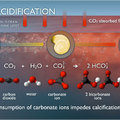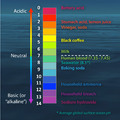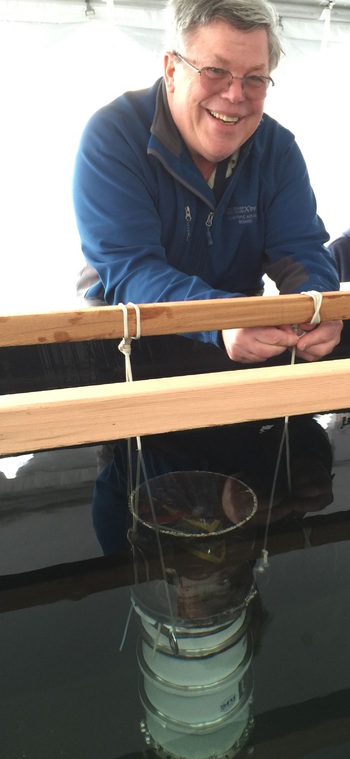NOAA Scientists Provide Expertise for the Wendy Schmidt Ocean Health XPRIZE
We caught up recently with Remy Okazaki at NOAA’s Pacific Marine Environmental Laboratory in Seattle. Remy is a chemist with the University of Washington Joint Institute for the Study of the Atmosphere and Ocean (JISAO) working with PMEL’s carbon team on the $2 million Wendy Schmidt Ocean Health XPRIZE, a global competition to advance ocean pH sensing technology to better understand, measure and address ocean acidification. On May 14, XPRIZE will begin the final phase of testing in deep water off the northern coast of Oahu, Hawaii, aboard the R/V Kilo Moana research vessel.
Q: Remy, can you tell us why NOAA is involved with the Wendy Schmidt Ocean Health XPRIZE and what you’re specific role is within the competition?
A: NOAA’s Pacific Marine Environmental Laboratory has expertise in how to measure the acidity of ocean waters so we are providing actual pH values against which the teams are judged.
Q: Why is it important to have improved ocean pH sensors?
A: The global problem of ocean acidification is a result of the ocean’s uptake of carbon dioxide from the atmosphere. Much of our knowledge in this area has been based on measurements made in the open ocean, but only recently have we begun to focus on much more-variable coastal environments, where many people’s livelihoods may be affected by ocean acidification. Currently, most pH sensors are expensive, inaccurate, fragile or quickly start to drift. The competition will encourage the development of new sensors that overcome these limitations. These new sensors will then improve our ability to tease out ocean acidification from natural variability.
Q: What are some of the innovative approaches you have seen the teams take during this competition?
A: We’ve seen sensors that use pH-sensitive dye, electrodes and hybrids of the two. Some competitors are adapting sensors developed for other industries, such as food processing. Others have been made from inexpensive, off-the-shelf parts available at home improvement and electronics stores.
Q: Who will use these instruments after the competition?
A: XPRIZE recognized early on that instruments would have different applications, so the $2 million prize purse is split between two categories: accuracy and affordability. Instruments in the accuracy category would likely be used for scientific research on oceanographic cruises, at deeper depths, and on moorings and floats. Instruments in the affordability category would likely be used for widespread monitoring, for example by owners of shellfish farms and other seafood industries and environmental groups with limited budgets.
Q: Can you tell us a little about who competes for such a prize – what kind of backgrounds do these teams have?
A: The teams are remarkably diverse. They range from high school students to research divisions of international companies. Their expertise ranges from food processing, oil exploration, and surf industry consultants to more traditional marine science. That diversity is reflected in the unique approach each team takes with their sensor design.
Q: And finally, when will the winner be announced?
A: The winners will be announced on July 20th in New York City. There could be one winner in both categories or it may be split among multiple teams so keep any eye on the official Wendy Schmidt Ocean Health XPRIZE website.
For more information, please contact Adi Hanein at (206) 526-6810 or adi dot hanein at noaa dot gov






